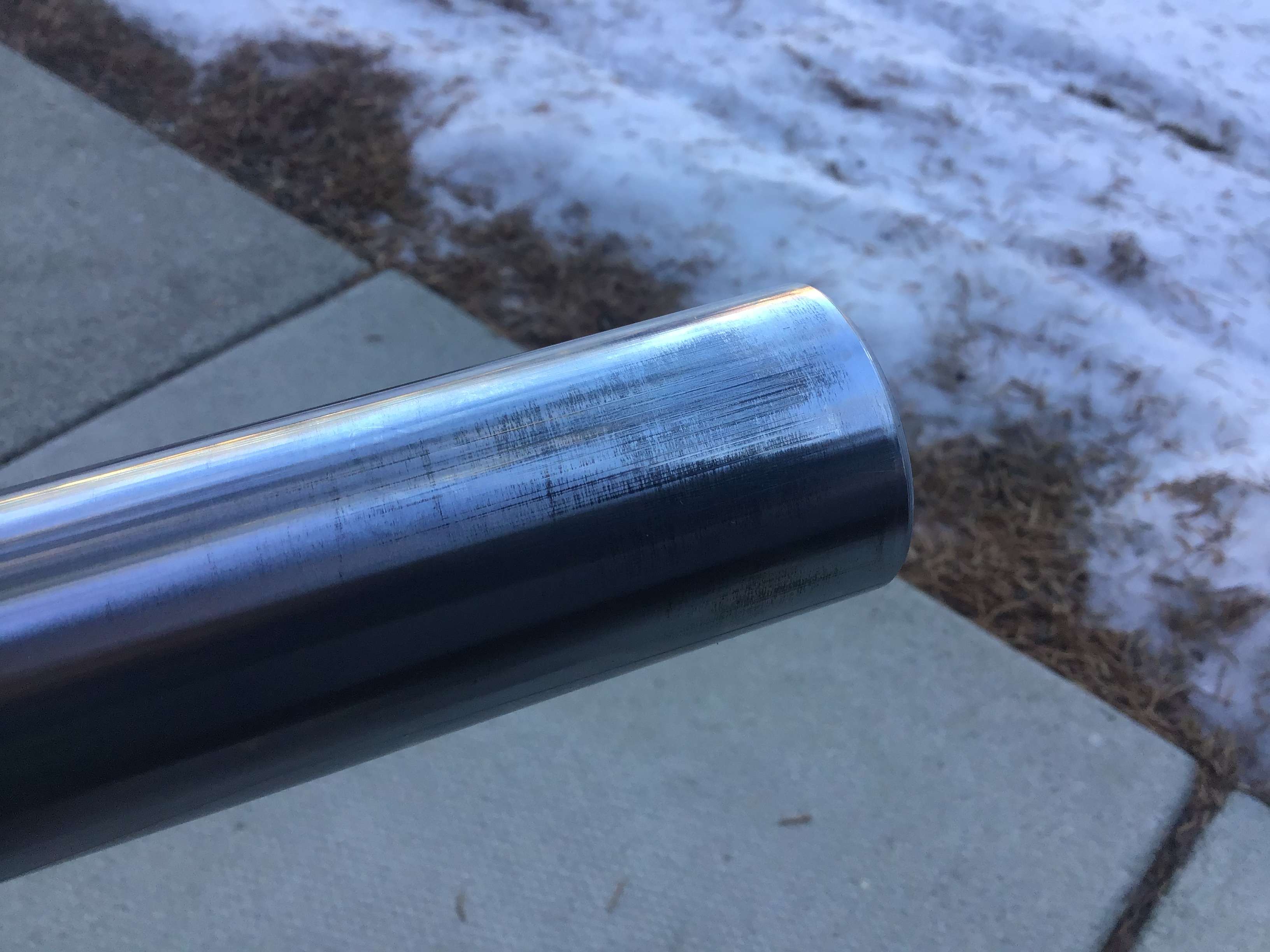mcmlcccvrs
New member
Do I need to do anything about this?
I've always known since I've owned the bike that there was 2 different lengths of fork oil drain screws, and when I looked into it I found out why, but never worried about it until now. The length of the thread in the drain hole is 6mm and the screw that was in there was 8mm (proper screw is 6x6). This is because the first half of the thread (about 3mm of it) is completely stripped, so "a" previous owner found out that putting in a longer screw that would bite more threads worked. Problem solved, right?
What I found last weekend when I started my cartridge emulator upgrade is that the longer screw was sticking out into the slider and impinging on the fork tube as I went bumpity-bump down the road. You can see the scrapes which I can only just barely, slightly feel with my finger nail.
I now have to drill and tap a new hole-8mm probably. That's no big deal. I would like your opinion's on whether I can reuse this fork tube or if I should look for a good used one. I honestly don't see why I can't use it but lots of you guys have more experience than I do. Personally, I've never had a bike where this has happened so I thought I would ask.
Thanks,
Tom

I've always known since I've owned the bike that there was 2 different lengths of fork oil drain screws, and when I looked into it I found out why, but never worried about it until now. The length of the thread in the drain hole is 6mm and the screw that was in there was 8mm (proper screw is 6x6). This is because the first half of the thread (about 3mm of it) is completely stripped, so "a" previous owner found out that putting in a longer screw that would bite more threads worked. Problem solved, right?
What I found last weekend when I started my cartridge emulator upgrade is that the longer screw was sticking out into the slider and impinging on the fork tube as I went bumpity-bump down the road. You can see the scrapes which I can only just barely, slightly feel with my finger nail.
I now have to drill and tap a new hole-8mm probably. That's no big deal. I would like your opinion's on whether I can reuse this fork tube or if I should look for a good used one. I honestly don't see why I can't use it but lots of you guys have more experience than I do. Personally, I've never had a bike where this has happened so I thought I would ask.
Thanks,
Tom


